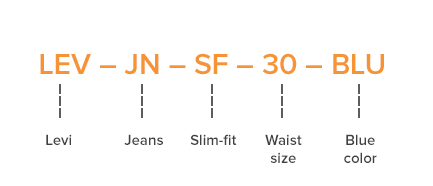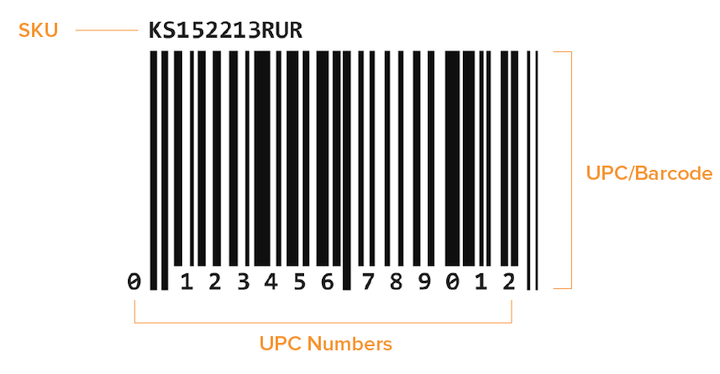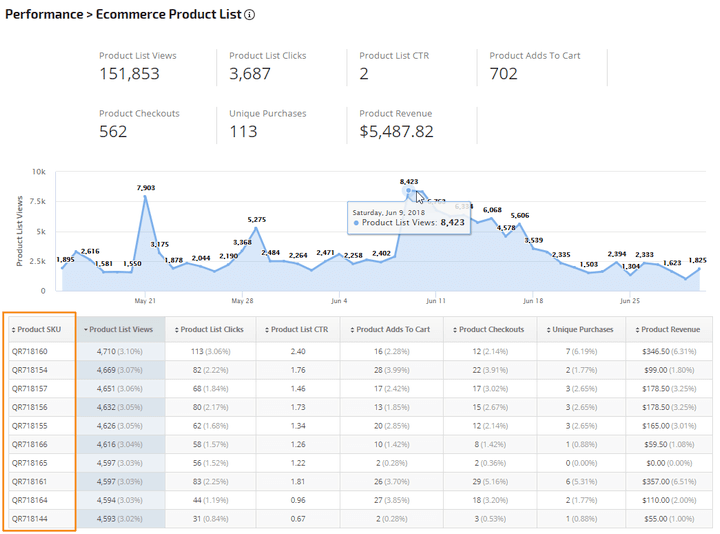Table of contents
Whether you’ve got a massive inventory or a small one, an SKU system is what keeps everything in place and helps your operations run efficiently. However, not everyone knows the ins and outs of SKUs, and it can be easy to mistake SKUs with other identification numbers, such as UPCs (Universal Product Codes) or GTINs (Global Trade Identification Numbers).
What is SKU?
Understand SKUs thoroughly—from what it is, where it comes from, what’s the standard SKU format, and differentiating between SKUs and other identification numbers.
Definitions
Short for Stock Keeping Unit, SKU is the unique identifier to help differentiate between products, or between variants (e.g., shirts with multiple colors and sizes) of the same products.

Where do SKUs come from?
It’s crucial to understand where SKUs come from, as it’s one of the most distinct differences between SKU and other identification numbers. A rule of thumb is that SKUs come from you—the retailer. Retailers create SKUs for internal product management, and the SKUs created may be used by another brand to identify the products, but they are not universal product code of any means.
UPC, GTINs, EAN, and other types of unique product identifiers come from the manufacturer. As a manufacturer, you’re responsible for purchasing UPC/GTINs generated by central agencies and printing them as unique labels and barcodes for your products. These unique product codes can be used as SKUs by retailers, but since UPC numbers are long and make product management harder, this is not a best practice, and retailers should choose their own SKUs instead.
SKUs, UPCs, GTINs, and barcodes
Because these identification methods share some similarities, it can be easy to mistake one for another.

Usually located at the top of barcodes, SKUs are retailer-specific identification codes, while UPC/GTIN are universal product numbers which can be used by any retailer. These universal product numbers are unique, and the same product sold by different retailers will have the same GTIN/UPC but varying SKUs.
And regarding barcodes, they’re simply graphical representations of numbers or of combinations of numbers and character, which is why a barcode can be made for any of the identifiers we’ve discussed. However, the barcodes that you see pre-printed on products are almost always UPC, GTIN, or other types of unique product identifiers.
| SKUs | UPCs/GTINs | Barcodes |
| 8 – 12 alphanumeric characters | 8 – 14 digits | graphical image |
| retailer-specific | universal and unique | universal and unique |
Why SKUs are essential for eCommerce
To understand why SKUs are essential for eCommerce, you’ll need to understand the benefits associated with having a proper, efficient SKU system.
Better product & inventory management
Having a proper SKU system is the basis of good product management. With an SKU system in place, you can identify variants of the same product (such as color, size, season, etc) and learn which product item is less popular, and from which point, you can identify losses by reducing the carrying cost involved with overstocking.
This leads to the main benefit of SKU, which is inventory management. SKUs enable you to have a clearer picture of your stock levels and product movements, and using the information gathered, you can set triggers for initiating and stopping orders. This means being able to automatically file restock orders when an SKU reaches a threshold, and have your operations run almost entirely automated.
Minimize theft & misplacements
By classifying and narrowing products down to their characteristic-level, it’s harder for a product item to go missing without being reflected on your backend.
Deeper insights
Simply by including SKUs in your invoices or receipts, you can analyze for yourself which SKUs are the well-doing ones, and which ones are considered slow-moving. This leads to an easier time of gathering sales performance data, as SKUs provide the consistency and accuracy that can’t be replaced by other means.

Rules for creating effective SKUs
It’s up to you to manage your products, and the best way you can do this would be to have them digitally managed using an efficient SKU system in order to avoid unnecessary hassles down the road. Here are some essential rules for you to start with:
Have a clear coding scheme
Every good effective SKU system has a clear coding scheme, and yours should too. The coding scheme can be based on the brand of your products, color, size, or just anything that can tell your products apart.
| Product name | Code | Item color | Code | SKU |
| NEW BALANCE SHOES 587 | A1 | Black | B1 | A1B1 |
| NEW BALANCE SHOES 587 | A1 | Blue | B2 | A1B2 |
| NEW BALANCE SHOES 587 | A1 | Yellow | B3 | A1B3 |
And additionally, you’ll want to decide if you want your SKU codes to be long or short, as there are clear benefits to each.
| Short SKUs | Long SKUs |
| Easier to pick and pack | Harder to read out during pick and pack |
| Needs cross-referencing to identify products | Comprehensible |
For example, let’s take the below two products for example. Both are the same products but in different SKU codes.
| Short SKUs | Long SKUs |
| TNK-01 | SC-TEE-NIKE-SML-BLK |
| TNK-02 | SC-TEE-NIKE-MED-BLU |
From first glance, we can somewhat guess the meaning behind the long SKUs. They’re used to identify two Nike tee shirts: one is small (SML) and black (BLK), and the other is medium (MED) and blue (BLU). This naming scheme can be especially helpful when you spend a lot of time looking at stock in your online store, as there will be less cross-referencing required in order to identify the products.
Alternatively, if your SKUs are mostly required for the picking and packing process, it might be a good idea to keep your SKUs short, as there are fewer words needed to read out.
Avoid ambiguous & special characters
Characters that can be confused with numbers (e.g., 0 and O, L and I) are best avoided in order to further complexities. Special characters such as space (“ “) and dash (“_”) should also be avoided in order to ensure the best compatibility between systems. As a best practice, you should only use hyphens (“-”) to connect between product characteristics.
Follow an order of importance
Make sure that the most important characteristic of the product (e.g., brand name, grouping, etc) goes first in the SKUs. If your customers frequently look for a specific product attribute (such as color or size), it might be a good idea to put the preferred product attribute at the beginning of your SKUs, such as BLUE-TEE-MED-SC15 (blue tee shirt, with SC15 being the manufacturer code).
Conclusion
Walking away from this article, the keyword that we can gather here is accuracy. If you want accuracy in your operations, an efficient SKU system is the one thing that you can’t do without, which is why every eCommerce store should have a proper SKU system in place, and yours shouldn’t be any different.




